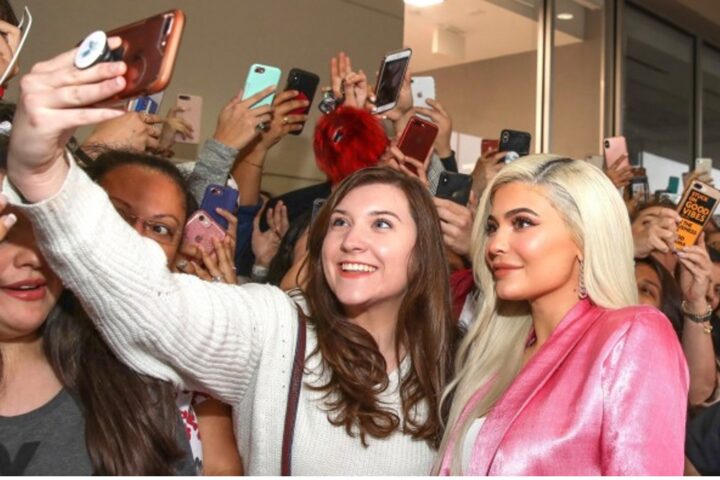Picture this: You are scrolling through Instagram and stumble upon a rather humdrum post of an XYZ brand you’ve never heard of. The determined scroller in you doesn’t wait up to read what the post is about, and quite organically moves on to the next post ready for you by the algorithm. Now picture a slightly different scenario. The difference is that this time it’s your favorite internet personality promoting this very brand. Call it FOMO or your inquisitiveness, you’d want to know what the hype is about. Chances are, you might visit the brand’s website. In the best case scenario, the brand’s products are purchased by you in the next five minutes. A study by Olapic found that 31% of the respondents have purchased a product or a service in such cases. This internet personality, whom you trust enough to make or break your purchasing decisions, is an Influencer.
How much Fame to be Famous?
From Tiffany and Co. to your local businesses, every brand with a social media presence is scrambling to work with Influencers to reinforce brand trust and increase targeted reach, resulting in a multi-billion dollar influencer marketing industry.
There are several parameters that help determine the ‘fame fortune’ of an Influencer but what tops the list is the number of followers they have. More often than not, this factor is proportionate to their fame. Influencers with a colossal fan following are not only sought out by brands but also make a fortune out of such arrangements. Access to a large audience who rely on your credibility opens gates for brand collaborations and opportunities to rake in a lot of money. This is probably why fake Influencers are sweeping across social media giants and manufacturing Influencer Frauds.
According to a study by a cyber security company Cheq and the University of Baltimore, it was predicted that Influencer frauds cost advertisers 1.3 billion in 2019, projected to grow to 1.5 billion in 2020. With the pandemic and rapid increase in Influencer marketing from home, one can only imagine the current risks that brands might be facing.
When brands collaborate with influencers, the latter become the face of the brand in the eyes of the average consumer. Engaging with a fake Influencer is risking the brand image, consumer trust, campaign effectiveness – thus incontrovertibly leading to financial losses. And that’s why it is imperative that a brand perform an authenticity check before sealing the deal with any influencer.
How Fake to be Famous?
Fake Influencers commoditize fame, buy fake followers and engagement while posing as conventional Influencers. A simple Google search “how to buy fake followers on Instagram” will provide you with dozens of services that enable you to buy these human forgeries. The costs depend on how many and how promptly you want them.

Image source: Google Images
A huge chunk of these fake accounts are automated accounts known as bots. Typically, these are the spam accounts that post a plethora of generic comments on Influncers’ posts to increase traffic and engagement.
Another way they increase engagement is by becoming a part of comment pods. It’s a barter exchange of comments, a sort of a group where each member comments on the other’s posts, and the favor is then returned.
An experiment by Mediakix breaks down this process and demonstrates how easy it is to buy fame while posing as influencers and even go as far as securing brand deals.
How to Identify the Fake Famous?
Fake accounts and bots are welcomed with warmth by fake Influencers, but they also plague the accounts of those who didn’t ask for it.
In 2014 came the Instagram Rapture. In a quest to put an end to the fakery that was looming over the web, Instagram deleted millions of accounts as a result of which celebrities like Taylor Swift lost millions of followers in just a few days. Apparently, Instagram didn’t delete enough millions. Turns out that these bots are still very much present, and have become smarter. Companies that produce bots earn profits out of these fake accounts, and keep developing them to evade the algorithm and stick around.
And so we face the real question –
“How to identify what’s fake? How can we spot fake influencers?”
Since it is all about the number game, a study of these metrics will give away relatively credible information about fake influencers and their path to fame.
- Engagement to Follower ratio
An Instagram influencer who has bought fake followers is likely to have barely any likes on their posts. It is possible to buy 50k followers over a span of 10 days and still get as little as 50 likes on posts. This means that their engagement rates are significantly lower than what they should have been, if their followers were all genuine. If you come across such a pattern on any Influencer’s account, it is best to not partner with them.
- Look for bot comments
These auto-generated comments are now ubiquitous on Instagram ranging from being absolutely generic to intrusively abusive. Whether your post is about your recent trip to Mexico or about your neighbor’s cat who’s dying, bot replies like “nice pic”, “get free cash prize on buying 20 bitcoins” flood the comments section of these accounts. High-profile grammers like Kylie Jenner, Justin Beiber also fall prey to these bots. But what makes your influencer different is when you notice a continuous series of such comments on each of their posts. A quick glance through 20 of their recent posts should do the job. If the primary type of comments on their posts are like the ones mentioned above, it is possible that they have signed up for this bot parade.

Image Source: Einstein Marketer
- Look through their ‘followers’ list
This might sound a bit cumbersome, but once you know what you’re trying to uncover, the job gets easier. Fake influencers buy fake followers to appear more popular than they actually are. That’s why their followers are a direct source that help discover whether the Influencer is genuine or administering fakery. The most obvious signs of a fake follower account are having a blank display picture, following thousands of accounts but not having a single follower, 0 posts, a cryptic username. When most of the followers of your influencer embody these features, it is quite possible that they have been bought.
- Tagged photos
Genuine Influencers with a thriving community are tagged in posts by their followers, and even fan pages. Fake influencers generally do not exist in the same capacity in the real world. If your influencer isn’t tagged in other people’s/ followers’ posts, chances are that they have faked their entire web existence and bought their fame.
- The authenticity of their content
In addition to inauthentic practices like buying fake followers, if their content itself seems to be stolen and full of stock photos, then your influencer isn’t really being honest while influencing. Checking the veracity of what they post is another way to identify their genuineness.
- Instagram Analytics offered by platforms
Platforms like Hypeauditor analyze the quality of influencers’ audiences, engagement rate, and comment authenticity. Brands take help from such platforms to do detailed statistical research on influencers to put a value estimate on them and negotiate better. Type any account name in their search bar, and at a certain cost, one can access the account’s insights.

Image source: Hype Auditor
Every social media aficionado is looking for growth and employs different methods to stay at the top of their game. Many get consumed in vanity metrics and resort to the ‘fake it till you make it’ mentality. Because fame, engagement, and everything in between can be traded online, brands are attempting to come up with the right metrics to base an Influencer’s value on. With every attempt of social media giants to eradicate these dishonest practices, there comes a more evolved and evasive bot system that doesn’t get caught and spreads exponentially. Fake influencers and corresponding frauds endanger every stakeholder of the online marketing platform. There is a sincere need for brands, consumers, and followers to be aware of these practices to not only steer away from them but to also report these accounts and take necessary actions to protect themselves.














